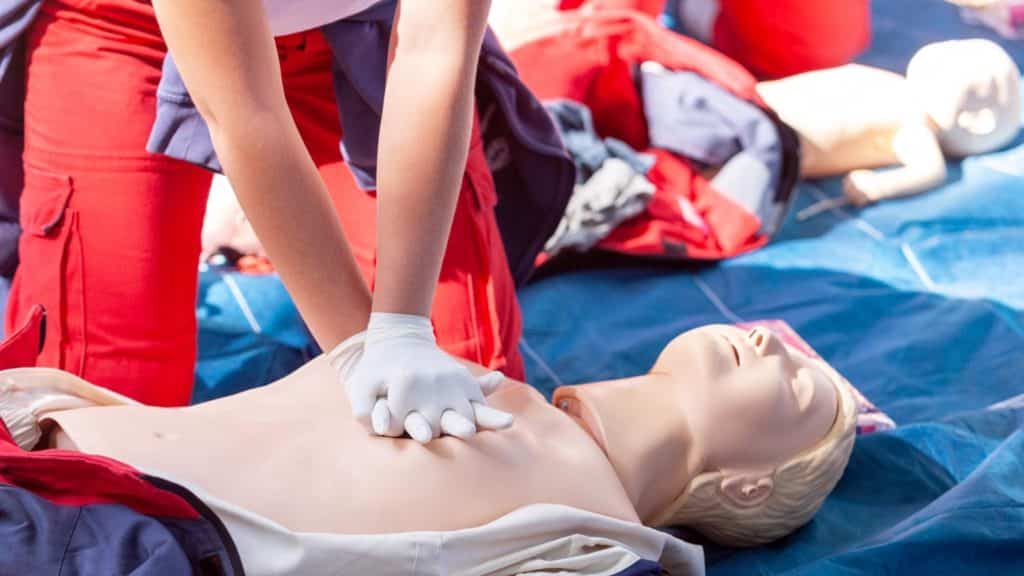Healthcare professionals learn CPR, First Aid, and Basic Life Support training to help save people in health and other emergencies. However, CPR and First Aid training courses are also compulsory in different places of employment. Many citizens also learn these skills in their private capacity to offer their assistance whenever and wherever required.
Once you have completed your training in any of these lifesaving disciplines, you receive a certificate that proves your skills. Depending on the training, the certificate’s validity has an expiration date, and it is essential to keep the certificate up-to-date by taking the recertification training.
All these first response disciplines, whether to assist someone with a cut, bruise, cardiac arrest, anaphylaxis, choking, drowning, etc., are based on having the skills required to apply the techniques to help the person until professional help arrives.
We are an aging society, and the generation of Baby Boomers is now increasingly reaching the age where they may require medical assistance. The risk of exposure to viruses, infections, and environmental illnesses has also increased in recent years. First Aid and CPR are essential for helping an unconscious person or someone with an injury.
Using the proper techniques can save a life and improve the person’s chances of recovery. CPR and First Aid training is inexpensive and requires just a few hours, ensuring that you have the skills to help in any situation.
However, once you complete the training, you must consider that retraining and recertification are essential to keeping your skills refreshed. Workplaces and school programs often require employees and students to maintain valid certificates. Regular certificate updates benefit you because you retain the confidence to practice your lifesaving skills while also learning any new developments and techniques to save lives.
Workplace Requirements and First Aid
According to WSIB Ontario, First Aid training requirements differ in the workplace. These requirements include the number of people and type of First Aid training required and depend on several conditions. These include the number of shifts, people per shift, and the kind of business activity.
If a company does not use dangerous equipment or chemicals, the required number of employees usually take only Emergency First Aid training. Other companies must provide Standard First Aid training to the prescribed number of employees per shift if they work under more dangerous conditions.
Generally, if less than five employees work per shift, one employee per shift requires valid Emergency First Aid & CPR/AED Level C training and certification. For companies with more than five employees per shift, at least one employee must have a valid Standard First Aid & CPR/AED Level C certificate.
At some workplaces, the requirements are annual recertification, even if the certificate is valid for three years.

Stay Certified, Stay Prepared!
Renew your skills with our recertification courses at Coast2Coast! Keep your knowledge up to date and ensure you’re ready to respond in emergencies. Our expert instructors will guide you through the latest techniques and best practices.
Certificate Validity
Don’t forget the validity period of your First Aid, CPR, or Basic Life Support certification, especially if the certificate is a requirement under Ontario’s Regulation 1101 for your workplace.
CPR Training
CPR or cardiopulmonary training does not include any first aid training. The various levels of CPR training teach candidates how to recognize and respond to breathing emergencies like cardiac arrest, choking, drowning, etc. One of the major learnings would be the use of an Automated External Defibrillator (AED). CPR certificates are valid for three years, but can be recertified multiple times regardless. You need to retake the training and receive a new certificate before the old one expires.
First Aid Certificate Validity
Our Canadian Red Cross Emergency and Standard First Aid & CPR/AED certificates issued by Coast2Coast are valid for three years.
Standard First Aid & CPR/AED Recertification – Standard First Aid & CPR/AED recertification training must be completed before the certificate expires; otherwise, it is invalid. Once you complete the one-day renewal course, your certificate indicates the recertification. After the expiry of the Standard First Aid & CPR/AED recertification, you must complete the full training course again. Training must be alternated between a full course and the Recertification course.
Emergency First Aid & CPR/AED – According to WSIB in Ontario, Emergency First Aid & CPR/AED Level C courses can not be recertified. Before the expiry of this certificate, you need to register for the full training course. The online blended format is an ideal training, allowing you to complete half the training online followed by a 5-hour in-class section.

Basic Life Support Training
Basic Life Support is the intensive training required by people working in healthcare and rescue services. BLS certificates are only valid for one year. Full training is required each time because of the ever-changing duties of these professionals who usually work in fast-paced and demanding environments.

Coast2Coast First Aid & CPR Recertification Courses
Remember, if your Standard First Aid Certificate is about to expire, you need to complete the recertification training before to ensure its validity. All other certificates require you to do the training again. Whatever your CPR and First Aid certification needs, Coast2Coast offers various recertification courses throughout the day to best fit your schedule. Register for one of our Recertification courses from one of our 18 locations all over Ontario.
Register for First Aid Training
Register today for a First Aid training course and learn how to deal with emergencies and keep your loved ones safe! Check out our facilities and book your spot now.




















No comment yet, add your voice below!